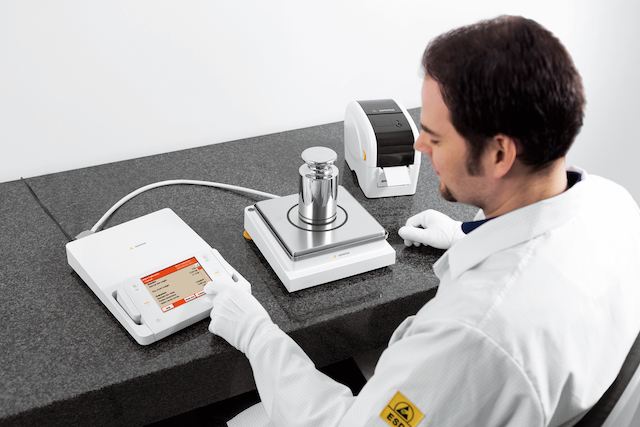
Read on to learn a bit about the benefits of daily weight checks for your lab balances!
Regular testing of balances and scales is the only way to uncover malfunctions early and help eliminate inaccuracies that might otherwise go undetected until the next service calibration. More and more people realize that it is both less pricey and more efficient to build quality into weighing results from the very start instead of discovering issues later in the process. Read on to learn a bit about the benefits of daily weight checks for your lab balances!
The Four Main Pillars of Routine Scale and Balance Testing
Today’s short guide will explain the four primary pillars of successful weighing device testing. That is:
- Test frequency
- Test methods
- Testing weights
- Testing tolerances
The guide provides a simple-to-follow procedure that outlines how often you should test, how to test, and which weights you should use to ensure a correct balance function. Furthermore, links to any helpful tools or complementary information are then provided.
Put Routine Testing into Your Practice!
Building quality into your weighing results from the very start instead of discovering issues later pays off. Put routine testing into practice and ensure that your weighing results are accurate every day.
Why is Routine Testing of Scales and Balances So Essential?
Scales and balances play a significant role in development, research, quality assurance, and production. However, errors in weight measurements also cost time and money, and violations of any legal requirements might even cause damage to health and the environment. Ensuring and maintaining the performance of a device and reducing the overall risk of it being outside process tolerances will require the proper setup of the instrument and consistent calibration by the service provider. The user should perform regular tests between service intervals to uncover malfunctions early and help eliminate surprises at the very next calibration.
Testing Methods, Warning, and Control Limits
Lab Balances should be tested before use or incorporate daily weight checks and should use a weight and weight class appropriate to your specific lab balance’s capacity and readability.
Utilizing a weight check log that documents when weight checks are complete and performing regular testing of equipment may be required depending on your laboratories accreditation and regulatory requirements such as GLP, GMP, USP, and CLIA.
Routine tests might include repeatability, sensitivity, and eccentricity tests using some appropriate calibrated test weights. Tolerances and warning control limits will depend on the weighing tolerance for the process. Warning limits will indicate when a device is nearing an out-of-specification condition. Control limits alert you when the device isn’t deemed fit for purpose. Routine testing of any balances or scales between scheduled calibrations helps maintain accuracy by ensuring early detection of any non-compliance with weighing process requirements so that proper actions can be taken quickly.
FOR ALL ISO 17025 CALIBRATION SERVICES, CONTACT LAB PEOPLE TODAY
Lab People Inc. is a trusted provider of laboratory equipment, services, supplies, and rental equipment for you and your laboratory. As an ISO 17025 accredited service organization, we stand behind our services with 100% satisfaction guaranteed for all our customers. We offer on-site and off-site calibration services for balances, pipettes, moisture analyzers, force measurement, test weights, and more. Services include preventative maintenance, SQ-Min, IQOQ, repairs, legal for trace/placed in service, verification, and more.
For more information about how we can assist you, visit our website, email us, or call us at 1-800-296-2001!
